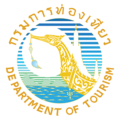Authentic Thailand: Why Kayaking Reveals the Soul of the Andaman Sea

In the pre-dawn silence of Phang Nga Bay, as limestone karsts emerge from morning mist like ancient temples, there’s a moment when tourists become pilgrims and adventure becomes revelation. This is when the soul of the Andaman Sea reveals itself—not in the crowded beaches or tourist markets, but in the quiet spaces between the limestone towers, in the whispered legends of Sea Gypsy elders, and in the gentle rhythm of paddles moving through emerald waters that have remained unchanged for millennia.
For over three decades, Andaman Sea Kayak has understood that authentic Thailand isn’t found in guidebooks or Instagram hotspots—it’s discovered in the spaces where modern life hasn’t penetrated, where ancient rhythms still govern daily life, and where the relationship between humans and nature remains sacred and unbroken. Kayaking doesn’t just provide access to these places; it becomes the bridge between worlds, connecting modern travelers with the timeless soul of Thailand’s most spectacular seascape.
This is why millions of travelers seek authentic experiences, yet so few find them: authenticity cannot be manufactured, packaged, or scheduled. It emerges naturally when the right approach meets the right place at the right moment, when respect meets reverence, and when the journey inward becomes as important as the journey through Thailand’s most extraordinary landscapes.

Beyond the Tourist Trail: Where Authenticity Lives
The Paradox of Seeking Authenticity
In our globalized world, authentic cultural experiences have become increasingly rare and precious. Thailand, despite its reputation for tourism, still harbors pockets of genuine traditional life—but accessing them requires moving beyond the well-traveled paths that most visitors follow.
Why Conventional Tourism Misses Authenticity:
- Speed over depth: Rushing through experiences without time for genuine connection
- Performance over reality: Communities adapting behavior for tourist expectations
- Consumption over participation: Taking photos instead of building relationships
- Comfort over challenge: Avoiding the discomfort that comes with genuine cultural encounter
- Entertainment over education: Seeking amusing experiences rather than meaningful learning
Kayaking naturally counters these tendencies by slowing travelers down, requiring physical engagement, and accessing places where authentic life continues undisturbed.
The Soul of the Andaman Sea
The Andaman Sea’s soul isn’t found in any single location—it emerges from the complex relationships between water, limestone, wildlife, and the human communities that have called these waters home for over a thousand years.
Elements of Andaman Soul:
- Geological time: Limestone formations that connect us to deep time and natural processes
- Living culture: Sea Gypsy communities maintaining traditional maritime lifestyles
- Pristine ecosystems: Marine environments functioning as they have for millennia
- Spiritual landscapes: Places that have inspired reverence and wonder across cultures
- Rhythmic cycles: Tidal, seasonal, and lunar patterns that govern life in these waters
Kayaking provides intimate access to all these elements simultaneously, creating experiences that reveal the integrated wholeness of this remarkable region.
The Kayak as Cultural Bridge
Why Kayaking Creates Authentic Encounters
The kayak serves as more than transportation—it becomes a cultural bridge that enables authentic encounter with Thailand’s maritime heritage in ways that motorized tourism cannot replicate.
Kayaking’s Authentic Advantages:
Silent Approach:
- Allows observation of natural behavior in wildlife and human communities
- Permits hearing of natural sounds, traditional music, and genuine conversation
- Respects the acoustic environment that shapes traditional life
- Enables genuine surprise and spontaneous encounters
Human Scale:
- Moves at speeds that allow for real observation and connection
- Requires physical engagement that creates earned rather than purchased experience
- Limitations that build appreciation for local knowledge and skill
- Vulnerability that creates genuine dependence on local expertise
Cultural Appropriateness:
- Matches the water-based lifestyle of traditional Andaman communities
- Uses traditional navigation routes still followed by local fishermen
- Requires understanding of tidal and weather patterns essential to maritime life
- Demonstrates respect for the marine environment that sustains local communities
Traditional Navigation and Local Knowledge
Kayaking in the Andaman Sea requires the same traditional knowledge that Sea Gypsy communities have used for centuries, creating natural opportunities for cultural exchange and learning.
Traditional Skills Revealed Through Kayaking:
- Weather reading: Understanding cloud patterns, wind shifts, and atmospheric changes
- Tidal knowledge: Navigating complex systems of channels, caves, and lagoons
- Current awareness: Using natural water flow for efficient travel
- Landmark navigation: Using limestone formations and natural features for orientation
- Seasonal timing: Understanding when different areas are accessible and safe
When guides share this traditional knowledge with kayakers, they’re transmitting cultural heritage that has sustained maritime communities for generations.

Hidden Thailand: Places Only Kayaks Can Reach
The Geography of Authenticity
Authentic Thailand often exists in the places that modern transportation cannot reach—the shallow channels, narrow caves, and protected lagoons that remain accessible only to traditional boats and kayaks.
Inaccessible Authentic Spaces:
Hidden Mangrove Communities:
- Traditional fishing families living in remote channel systems
- Sustainable livelihood practices unchanged for generations
- Architecture adapted to tidal environments and seasonal flooding
- Social systems based on cooperation with natural cycles
Sacred Cave Systems:
- Spiritual sites used by local communities for ceremonies and meditation
- Archaeological evidence of human connection to these landscapes across millennia
- Geological formations that inspire reverence across cultural traditions
- Acoustic environments that have shaped traditional music and storytelling
Remote Fishing Grounds:
- Areas where traditional fishing methods remain economically viable
- Marine ecosystems maintaining natural balance through traditional management
- Intergenerational knowledge transfer still occurring in working environments
- Seasonal patterns that govern community life and cultural practices
The Last Unspoiled Places
In an increasingly developed region, the areas accessible only by kayak represent some of Thailand’s last genuinely unspoiled natural and cultural landscapes.
Why These Places Remain Authentic:
- Physical barriers: Natural protection from development and mass tourism
- Economic constraints: Limited commercial value for large-scale tourism development
- Cultural protection: Local communities maintaining traditional use patterns
- Environmental sensitivity: Ecosystems too fragile for intensive development
- Government designation: Marine protected areas and cultural heritage sites
These spaces offer encounters with Thailand as it existed before the modern tourism industry, where relationships between humans and environment remain balanced and sustainable.
Cultural Immersion Through Water
Learning Traditional Maritime Culture
Kayaking provides natural entry into understanding traditional maritime cultures that remain vibrant throughout the Andaman region.
Cultural Learning Opportunities:
Traditional Boat Building:
- Observing master craftsmen using techniques passed down through generations
- Understanding wood selection, tool use, and construction methods adapted to local conditions
- Learning about different boat types designed for specific functions and environments
- Participating in community boat blessing ceremonies and cultural celebrations
Sustainable Fishing Practices:
- Witnessing traditional fishing methods that maintain ecosystem balance
- Understanding seasonal patterns and species-specific techniques
- Learning about community management of fishing grounds and resource sharing
- Participating in traditional net-making and equipment maintenance activities
Navigation Traditions:
- Learning to read natural signs for weather prediction and route finding
- Understanding traditional landmark systems and oral navigation knowledge
- Practicing traditional paddling techniques and water safety methods
- Hearing stories and legends that encode practical navigation information
Spiritual Dimensions of Water
Water holds profound spiritual significance in Thai culture, and kayaking provides direct experience of these spiritual dimensions.
Water’s Spiritual Significance:
- Buddhist concepts: Water as symbol of purity, change, and interconnectedness
- Animist traditions: Water spirits and sacred sites requiring respect and offerings
- Hindu influences: Rivers and seas as manifestations of divine energy
- Local beliefs: Specific spirits associated with particular locations and seasonal cycles
- Meditation practices: Water environments as ideal settings for contemplation and spiritual practice
Kayaking naturally creates contemplative states that align with these spiritual traditions, allowing visitors to experience rather than simply learn about Thai spiritual culture.

The Rhythm of Traditional Life
Tidal Time vs. Clock Time
One of the most profound authentic experiences kayaking provides is learning to live according to natural rather than mechanical time.
Natural Time Patterns:
- Tidal cycles: Planning activities around rising and falling waters
- Lunar patterns: Understanding how moon phases affect tides, wildlife, and traditional activities
- Seasonal rhythms: Adapting to monsoon patterns and their effects on marine life and human activities
- Daily cycles: Following sunrise and sunset patterns that govern traditional work and rest
- Weather rhythms: Learning to read and respond to natural atmospheric patterns
This temporal re-orientation often produces profound psychological shifts, connecting visitors with natural rhythms that industrial life has obscured.
Community Rhythms and Social Time
Traditional Thai maritime communities operate according to social rhythms that prioritize community welfare over individual efficiency.
Community Time Patterns:
- Collective decision-making: Taking time for consultation and consensus-building
- Ceremonial time: Allocating substantial time for religious and cultural observances
- Hospitality traditions: Prioritizing guest welcome and relationship-building over productivity
- Intergenerational sharing: Time for elders to share knowledge with younger community members
- Seasonal celebrations: Community festivals that mark important transitions and achievements
Kayaking tours that respect these community rhythms provide opportunities for genuine cultural participation rather than superficial observation.
Environmental Authenticity
Pristine Ecosystems as Cultural Heritage
The marine environments accessible by kayak represent not just natural heritage but cultural heritage—ecosystems maintained through generations of traditional management and spiritual reverence.
Cultural-Environmental Integration:
- Sacred sites: Natural formations held sacred by local communities
- Traditional management: Marine areas protected through customary law and spiritual beliefs
- Sustainable practices: Traditional fishing and gathering methods that maintain ecosystem health
- Knowledge systems: Traditional ecological knowledge encoded in stories, ceremonies, and daily practices
- Spiritual relationships: Understanding of humans as participants in rather than masters of natural systems
These environments offer encounters with Thailand as it existed before the separation of culture and nature that characterizes modern life.
Wildlife as Cultural Teachers
The wildlife of the Andaman Sea serves not just as tourist attractions but as teachers of traditional knowledge and sustainable relationships.
Wildlife Cultural Connections:
- Navigation aids: Birds and marine life as traditional weather and location indicators
- Seasonal markers: Animal behavior patterns that govern traditional activities
- Spiritual significance: Particular species holding importance in local belief systems
- Traditional medicine: Marine plants and animals used in traditional healing practices
- Sustainable use: Traditional hunting and gathering practices that maintain population balance
Kayaking enables quiet observation of natural wildlife behavior, providing insights into the knowledge systems that sustain traditional communities.
Authentic Encounters: Stories from the Water
Sea Gypsy Wisdom
The Sea Gypsy communities of the Andaman Sea preserve knowledge and ways of life that offer profound insights into sustainable human-ocean relationships.
Traditional Wisdom Encounters:
- Weather prediction: Learning to read natural signs for storm and seasonal predictions
- Marine biology: Understanding fish behavior, breeding cycles, and ecosystem relationships
- Navigation skills: Traditional wayfinding techniques using stars, currents, and natural landmarks
- Sustainable harvesting: Traditional rules and practices for maintaining marine resource abundance
- Spiritual practices: Understanding the sacred relationships between humans and marine environments
These encounters provide not just cultural entertainment but practical wisdom relevant to contemporary environmental challenges.
Monastery Encounters
Hidden monastery and meditation sites accessible by kayak offer opportunities for spiritual encounter and learning about Buddhist practice in traditional settings.
Spiritual Learning Opportunities:
- Meditation instruction: Learning traditional Buddhist meditation techniques in natural settings
- Philosophy discussions: Conversations about Buddhist concepts of interconnectedness and impermanence
- Daily practice: Observing how traditional spiritual practice integrates with daily life
- Architecture and art: Understanding how traditional design reflects spiritual principles
- Community support: Learning how monastic communities interact with local fishing families
These encounters provide insights into living spiritual traditions rather than museum displays of religious culture.
Artisan Communities
Traditional craftspeople maintaining skills passed down through generations offer insights into pre-industrial approaches to work, beauty, and community support.
Traditional Craft Encounters:
- Boat building: Understanding traditional carpentry techniques and material selection
- Net making: Learning traditional fiber work and functional design principles
- Wood carving: Observing traditional artistic techniques and symbolic systems
- Traditional cooking: Learning sustainable food preparation and preservation methods
- Handicraft production: Understanding traditional economic systems and skill transmission
These encounters reveal approaches to work that prioritize quality, sustainability, and community welfare over efficiency and profit.
The Transformation of Travelers
From Tourist to Pilgrim
Authentic kayaking experiences in the Andaman Sea often transform tourists into pilgrims—travelers seeking meaning and connection rather than entertainment and consumption.
Transformational Elements:
- Physical challenge: Earning experiences through effort rather than purchasing them
- Cultural humility: Recognizing the limitations of outside knowledge and the value of local wisdom
- Environmental awareness: Understanding human dependence on healthy natural systems
- Spiritual opening: Experiencing wonder and reverence in natural cathedral settings
- Community connection: Building genuine relationships across cultural boundaries
This transformation often produces lasting changes in how travelers relate to both natural environments and cultural differences.
Skills That Transfer Home
The skills and perspectives gained through authentic kayaking experiences often prove valuable in travelers’ home environments and daily lives.
Transferable Learning:
- Environmental awareness: Increased sensitivity to natural cycles and environmental health
- Cultural appreciation: Enhanced ability to recognize and respect cultural differences
- Physical confidence: Improved comfort with outdoor activities and physical challenges
- Mindfulness practices: Skills for present-moment awareness and stress reduction
- Community building: Understanding of cooperation and mutual support principles
These skills contribute to more sustainable and fulfilling lifestyles that reflect authentic Thai values.

Preserving Authenticity Through Responsible Tourism
The Challenge of Sharing Authentic Places
One of the great paradoxes of authentic tourism is that sharing authentic places with visitors can gradually erode the very authenticity that makes them special.
Threats to Authenticity:
- Performance pressure: Communities altering behavior to meet tourist expectations
- Economic dependence: Traditional activities becoming financially less viable than tourism
- Cultural commodification: Sacred or meaningful practices becoming entertainment
- Environmental pressure: Increased visitation affecting ecosystem health
- External influences: Outside ideas and values disrupting traditional culture
Responsible tourism operators must balance sharing authentic experiences with protecting the conditions that make authenticity possible.
Andaman Sea Kayak’s Approach to Preservation
Through three decades of operation, Andaman Sea Kayak has developed approaches that support authentic culture while sharing it respectfully with visitors.
Preservation Strategies:
- Small group sizes: Limiting impact while maintaining economic viability
- Community partnerships: Ensuring tourism benefits support rather than replace traditional activities
- Cultural education: Teaching visitors appropriate behavior and understanding
- Economic support: Purchasing local products and services at fair prices
- Long-term relationships: Building trust through consistent, respectful interaction over decades
Visitor Education:
- Cultural preparation: Teaching appropriate expectations and behavior before visits
- Environmental awareness: Emphasizing conservation and minimal impact principles
- Economic education: Explaining how tourism choices affect community welfare
- Spiritual sensitivity: Preparing visitors for sacred sites and meaningful encounters
- Follow-up engagement: Encouraging continued learning and support after visits
The Future of Authentic Travel
Authenticity in a Globalized World
As the world becomes increasingly connected and homogenized, authentic cultural experiences become both more precious and more difficult to find and preserve.
Contemporary Challenges:
- Digital connectivity: Traditional communities increasingly connected to global culture
- Economic pressures: Traditional livelihoods competing with modern economic opportunities
- Climate change: Environmental changes affecting traditional relationships with nature
- Education systems: Formal education sometimes displacing traditional knowledge transmission
- Development pressure: Economic development altering traditional landscapes and communities
The Role of Responsible Tourism
Well-managed cultural tourism can provide economic incentives for preserving traditional culture while sharing its wisdom with the broader world.
Tourism as Cultural Support:
- Economic value: Creating markets for traditional skills and knowledge
- Cultural pride: Demonstrating to community members that their heritage has value
- Documentation: Encouraging communities to preserve and share traditional knowledge
- Education: Teaching both visitors and community members about cultural importance
- Protection: Providing economic alternatives to environmentally destructive development
Practical Guidance for Authentic Encounters
Preparing for Authentic Experiences
Authentic cultural encounters require preparation, appropriate expectations, and willingness to step outside comfort zones.
Pre-Trip Preparation:
- Cultural education: Learning about Thai history, religious traditions, and social customs
- Language basics: Learning polite greetings and expressions of gratitude
- Expectation management: Understanding that authentic experiences can’t be scheduled or guaranteed
- Physical preparation: Building fitness for activities that require effort and endurance
- Mental preparation: Developing patience and openness to unfamiliar experiences
During Authentic Encounters:
- Present-moment awareness: Focusing on immediate experience rather than documentation
- Respectful observation: Learning through watching and listening rather than questioning
- Cultural humility: Recognizing the limitations of outside understanding
- Genuine gratitude: Expressing appreciation for shared time and knowledge
- Appropriate reciprocity: Understanding how to give back to communities that share their culture
Choosing Authentic Tour Operators
Not all tour operators provide access to authentic cultural experiences. Choosing the right guide service significantly affects the quality and appropriateness of cultural encounters.
Authentic Operator Characteristics:
- Long-term community relationships: Operators with decades of trust-building in local communities
- Cultural expertise: Guides who understand local customs, languages, and appropriate behavior
- Small group commitment: Companies that prioritize quality over quantity
- Environmental responsibility: Operators committed to preserving the natural environments that sustain traditional culture
- Economic integration: Companies that ensure tourism benefits flow directly to local communities
Conclusion: The Soul Revealed
The soul of the Andaman Sea reveals itself not to those who seek it directly, but to those who approach these waters with respect, patience, and genuine curiosity about the relationships between humans and the sea that have sustained communities for over a millennium. Through the intimate, vulnerable, and physically engaging experience of kayaking, travelers can access not just the physical geography of this extraordinary region, but its spiritual and cultural geography as well.
Authentic Thailand exists in the spaces between the limestone towers, in the rhythm of tides that still govern daily life, in the wisdom of elders who read weather in cloud formations and navigate by stars, and in the sacred relationship between communities and the marine environments that sustain them. These authentic spaces cannot be packaged, scheduled, or guaranteed—they emerge naturally when the right approach meets the right conditions with the right intentions.
Kayaking provides that right approach because it requires visitors to slow down, to engage physically with natural forces, to depend on local knowledge, and to earn their access to special places through effort and appropriate behavior. When we paddle through hidden caves to emerge in secret lagoons, when we learn to read weather patterns from Sea Gypsy elders, when we participate in boat blessing ceremonies and traditional fishing activities, we’re not just observing authentic Thailand—we’re participating in it.
The soul of the Andaman Sea teaches us that authenticity isn’t something we can take or consume—it’s something we can only receive as a gift when we approach with sufficient respect and humility. It reminds us that the most meaningful travel experiences often come not from getting what we expect, but from being open to what we cannot anticipate. And it demonstrates that in our increasingly globalized world, places still exist where ancient wisdom remains alive, where traditional relationships with nature continue to flourish, and where the sacred and practical aspects of life remain integrated.
Through three decades of facilitating these encounters, Andaman Sea Kayak has learned that the soul of the Andaman Sea reveals itself most fully to those who understand that they are receiving a privilege, not purchasing a product. The limestone cathedrals, the emerald waters, the wisdom of traditional communities, and the pristine ecosystems offer themselves freely to those who approach with respect—and withhold themselves completely from those who arrive with anything less.
The soul of the Andaman Sea is not found in any guidebook because it cannot be described—only experienced. It waits in the silence between paddle strokes, in the wonder of hidden lagoons, in the generosity of communities sharing their knowledge, and in the humbling recognition that we are temporary visitors in a world far older and wiser than we can fully comprehend.








